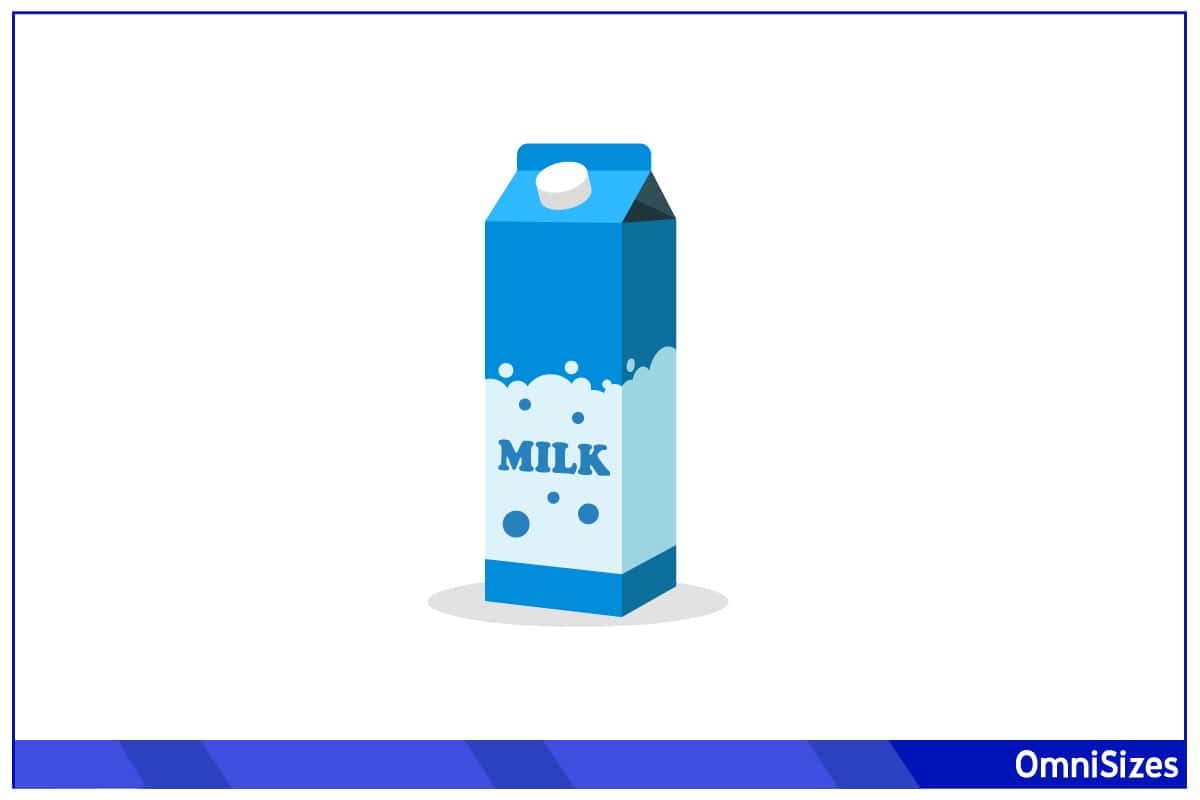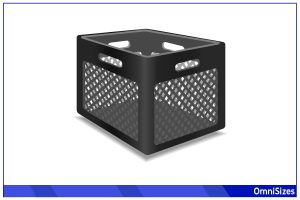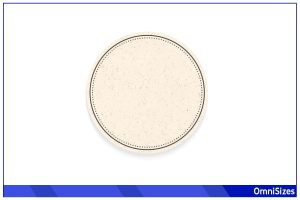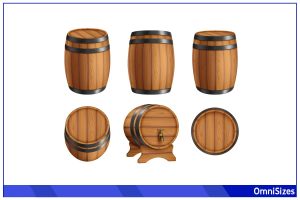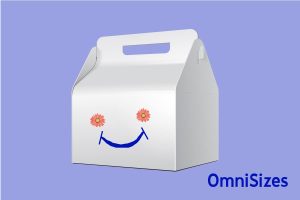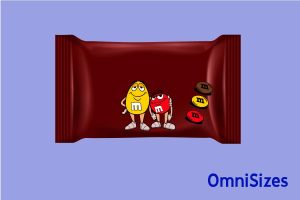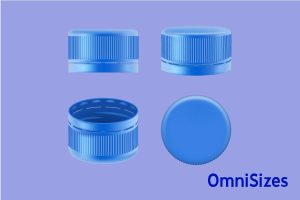Ever wonder why milk cartons come in so many sizes? Well, different milk carton sizes serve for different needs, from a quick school lunch to a big family breakfast. So, what are the classic milk cartons you can get at the supermarket?
Common milk carton sizes include:
| Milk Carton Size | Dimensions (L × W × H) in inches | Dimensions in cm |
| Half-pint | 2.75 × 2.75 × 3.75 | 7 × 7 × 9.5 |
| Quart | 2.75 × 2.75 × 7.5 | 7 × 7 × 19 |
| Half-Gallon | 3.75 × 3.75 × 7.75 | 9.5 × 9.5 × 19.6 |
| Gallon | 5.5 × 5.5 × 7.5 | 14 × 14 × 19 |
That’s not the end of the milk container’s journey. In addition to milk carton sizes, this guide will also describe the colorful history of milk cartons, as well as discuss alternative milk container materials and sizes.
Where Did Milk Cartons Come From?
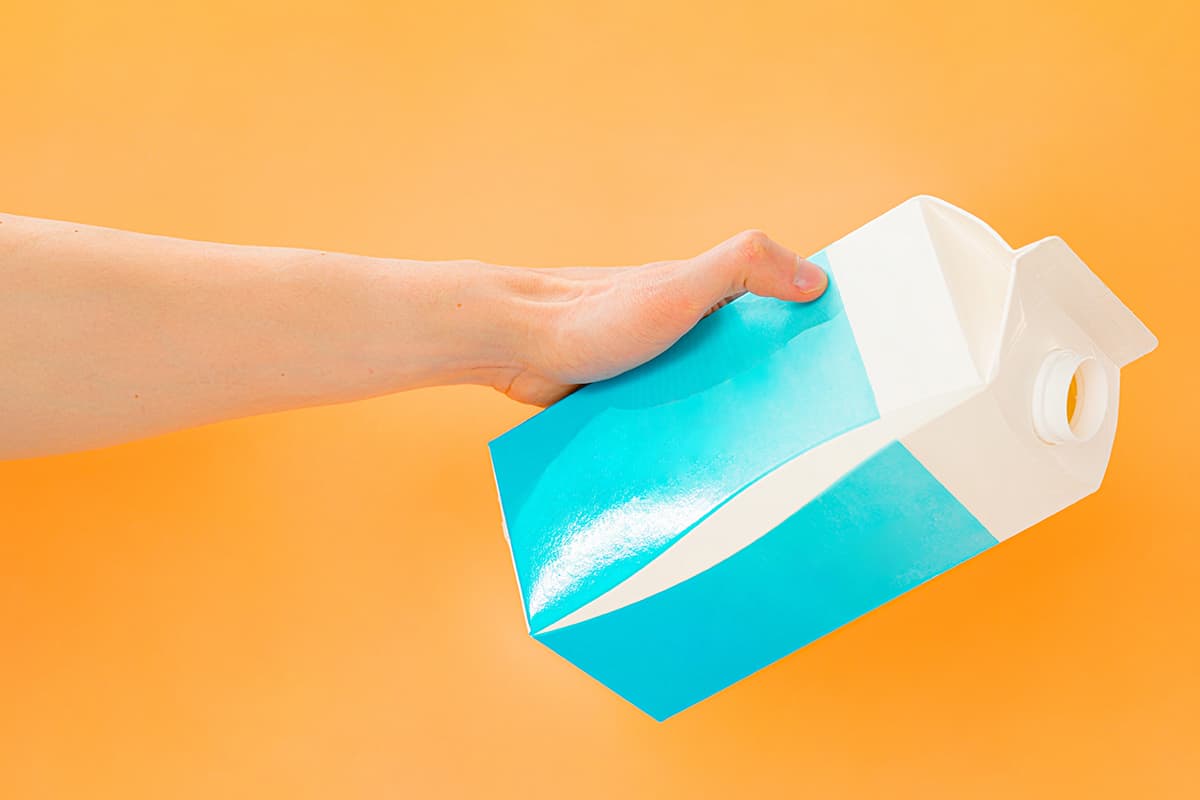
Milk cartons, now a familiar sight in our fridges, have a pretty cool backstory. Milk used to come in glass bottles, which were heavy and breakable. That’s when the milk carton made its grand entrance.
The Birth of the Milk Carton
The first milk carton was introduced in the early 1900s. It was a simple, yet effective design made from paperboard. This material was lighter than glass and could be easily disposed of, making it a hit among consumers and dairies. The first versions were gable-top cartons, which you still see today. They were convenient, easy to pour from, and best of all, recyclable.
The 1950s saw the introduction of the Tetra Pak, a more durable and protective carton. This innovation used a multi-layered material that kept the milk fresh longer and protected it from light and air. The Tetra Pak carton could also be stored without refrigeration, so dairy products had a longer shelf life.
Modern-day milk cartons are all about convenience and versatility. We’ve got screw caps and spouts for easy pouring, and all sorts of carton sizes. There’s also a focus on smart packaging, like cartons with built-in sensors to tell you if your milk is still good.
Standard Milk Carton Sizes
Ever stood in the dairy aisle and noticed how many different sizes milk cartons come in? There’s a size for everyone, whether you’re a solo coffee drinker or a big family.
1. Half-Pint
This little guy is the smallest standard size. Perfect for a single serving, you’ll often see half-pints in school cafeterias or at your favorite coffee shop. They’re handy for a quick drink and super easy to carry around. Ideal for those who enjoy milk in small doses.
Dimensions: 2.75 × 2.75 × 3.75 inches (7 × 7 × 9.5 cm)
2. Quart
The quart is great for those living alone or with limited fridge space. This size is not too much, not too little, just right for personal use. Quart cartons are a common sight in small households or for those who enjoy milk but don’t gulp it down by the gallon.
Dimensions: 2.75 × 2.75 × 7.5 inches (7 × 7 × 19 cm)
3. Half-Gallon
The half-gallon is a popular size choice in many households. It’s enough for a family to enjoy milk with their meals without worrying about running out too fast or taking up too much fridge space. This size strikes a perfect balance between quantity and convenience.
Dimensions: 3.75 × 3.75 × 7.75 inches (9.5 × 9.5 × 19.6 cm)
4. Gallon
The gallon is the largest standard size and a real fridge occupier. It’s perfect for large families or those who really love their milk. Whether it’s for cooking, baking, or just having a glass with cookies, the gallon size means you’re unlikely to run out anytime soon.
Dimensions: 5.5 × 5.5 × 7.5 inches (14 × 14 × 19 cm)
Alternative Milk Container Types and Sizes
Milk doesn’t always come in a carton. There’s a whole world of different containers out there, each with its own style and size.
1. Glass Bottles
Remember the old-school milkman? That milk came in glass bottles. They’re making a comeback for both nostalgic and eco-friendliness reasons. Glass bottles are reusable and recyclable, and they keep milk much fresher for longer. They’re heavier and more fragile, but nothing beats them for style.
| Glass Milk Bottle Sizes | Dimensions in Inches | Dimensions in Centimeters |
| 16 oz. Squat | 3.3 × 3.3 × 5.6 | 8 × 8 × 14 |
| 16 oz. Tall | 2.5 × 2.5 × 7.5 | 6 × 6 × 19 |
| 32 oz. Square | 3.3 × 3.3 × 8.8 | 8 × 8 × 22 |
| 32 oz. Rounded | 3.5 × 3.5 × 9.5 | 9 × 9 × 24 |
| 34 oz. Square | 3.3 × 3.3 × 9.3 | 8 × 8 × 24 |
| 64 oz. Square | 5 × 4 × 10 | 13 × 10 × 25 |
2. Plastic Jugs
Walk into any grocery store, and you’ll see plastic jugs. They’re the go-to for most families for being lightweight, durable, and having a handy handle for pouring. While they’re convenient, there’s a growing concern about their environmental impact. But they’re recyclable, so that’s a plus.
| Plastic Jug Sizes | Dimensions in Inches | Dimensions in Centimeters |
| 64 oz. | 3.8 × 3.8 × 9.3 | 10 × 10 × 24 |
| 128 oz. | 6 × 6 × 9.8 | 15 × 15 × 25 |
| 128 oz. Space-Saver | 6 × 5.5 × 10.5 | 15 × 14 × 27 |
3. Milk Bags
In some parts of the world, milk bags are the thing. They’re exactly what they sound like–bags of milk. Milk bags need a pitcher or a special container to hold them upright, but for saving space, they’re a winner.
| Milk Bag Sizes | Dimensions in Inches | Dimensions in Centimeters |
| 0.5 liters | 5 × 8 | 13 × 20 |
| 1 liter | 7 × 11 | 18 × 28 |
FAQs
1. What are milk cartons made of?
Milk cartons are mostly made from paperboard, a kind of sturdy paper. They’re coated with a thin plastic layer to keep the milk from leaking and to keep it fresh. Some cartons, specifically those made from Tetra Pak, also have a thin aluminum layer for extra freshness.
2. Why is milk sold in bags?
Milk is sold in bags mostly for convenience and to save space. These bags use less material than cartons or bottles, making them cheaper and more eco-friendly. Plus, they’re popular in some places because they’re easy to store and produce less waste.
